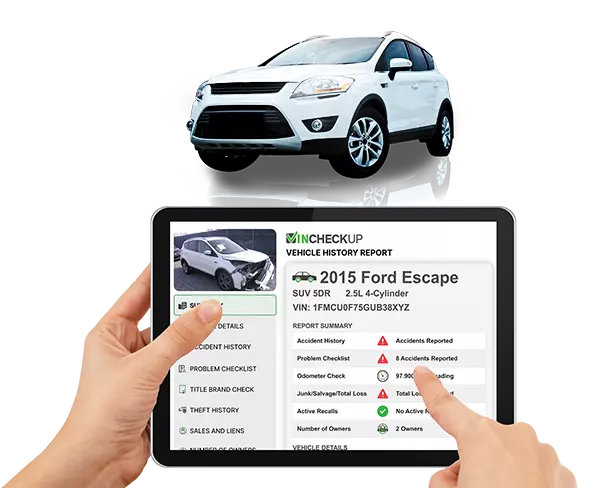Beyond the severe toll of the coronavirus pandemic, perhaps no other disruption has transformed user experiences quite like how the tethers to our formerly web-biased era of content have frayed. We’re transitioning to a new world of remote work and digital content. We’re also experimenting with unprecedented content channels that, not too long ago, elicited chuckles at the watercooler, like voice interfaces, digital signage, augmented reality, and virtual reality.
Many factors are responsible. Perhaps it’s because we yearn for immersive spaces that temporarily resurrect the Before Times, or maybe it’s due to the boredom and tedium of our now-cemented stuck-at-home routines. But aural user experiences slinging voice content, and immersive user experiences unlocking new forms of interacting with formerly web-bound content, are no longer figments of science fiction. They’re fast becoming a reality in the here and now.
The idea of immersive experiences is all the rage these days, and content strategists and designers are now seriously examining this still-amorphous trend. Immersive experiences embrace concepts like geolocation, digital signage, and extended reality (XR). XR encompasses augmented reality (AR) and virtual reality (VR) as well as their fusion: mixed reality (MR). Sales of immersive equipment like gaming and VR headsets have skyrocketed during the pandemic, and content strategists are increasingly attuned to the kaleidoscope of devices and interfaces users now interact with on a daily basis to acquire information.
Immersive user experiences are becoming commonplace, and, more importantly, new tools and frameworks are emerging for designers and developers looking to get their hands dirty. But that doesn’t mean our content is ready for prime time in settings unbound from the web like physical spaces, digital signage, or extended reality. Recasting your fixed web content in more immersive ways will enable more than just newfangled user experiences; it’ll prepare you for flexibility in an unpredictable future as well.
Agnostic content for immersive experiences
These days, we interact with content through a slew of devices. It’s no longer the case that we navigate information on a single desktop computer screen. In my upcoming book Voice Content and Usability (A Book Apart, coming June 2021), I draw a distinction between what I call macrocontent—the unwieldy long-form copy plastered across browser viewports—and Anil Dash’s definition of microcontent: the kind of brisk, contextless bursts of content that we find nowadays on Apple Watches, Samsung TVs, and Amazon Alexas.
Today, content also has to be ready for contextless situations—not only in truncated form when we struggle to make out tiny text on our smartwatches or scroll through new television series on Roku but also in places it’s never ended up before. As the twenty-first century continues apace, our clients and our teams are beginning to come to terms with the fact that the way copy is consumed in just a few decades will bear no resemblance whatsoever to the prosaic browsers and even smartphones of today.
What do we mean by immersive content?
Immersive experiences are those that, according to Forrester, blur “the boundaries between the human, digital, physical, and virtual realms” to facilitate smarter, more interactive user experiences. But what do we mean by immersive content? I define immersive content as content that plays in the sandbox of physical and virtual space—copy and media that are situationally or locationally aware rather than rooted in a static, unmoving computer screen.
Whether a space is real or virtual, immersive content (or spatialcontent) will be a key way in which our customers and users deal with information in the coming years. Unlike voice content, which deals with time and sound, immersive content works with space and sight. Immersive content operates not along the axis of links and page changes but rather along situational changes, as the following figure illustrates.
Acknowledging the actual or imagined surroundings of where we are as human beings will have vast implications for content strategy, omnichannel marketing, usability testing, and accessibility. Before we dig deeper, let’s define a few clear categories of immersive content:
- Digital signage content. Though it may seem a misnomer, digital signage is one of the most widespread examples of immersive content already in use today. For example, you may have seen it used to display a guide of stores at a mall or to aid wayfinding in an airport. While still largely bound to flat screens, it’s an example of content in space.
- Locational content. Locational content involves copy that is delivered to a user on a personal device based on their current location in the world or within an identified physical space. Most often mediated through Bluetooth low-energy (BLE) beacon technology or GPS location services, it’s an example of content at a point in space.
- Augmented reality content. Unlike locational content, which doesn’t usually adjust itself seamlessly based on how users move in real-world space, AR content is now common in museums and other environments—typically as overlays that are superimposed over actual physical surroundings and adjust dynamically according to the user’s position and perspective. It’s content projected into real-world space.
- Virtual reality content. Like AR content, VR content is dependent on its imagined surroundings in terms of how it displays, but it’s part of a nonexistent space that is fully immersive, an example of content projected into virtual space.
- Navigable content. Long a gimmicky playground for designers and developers interested in pushing the envelope, navigable content is copy that users can move across and sift through as if it were a physical space itself: true content as space.
The following illustration depicts these types of immersive content in their typical habitats.
Why auditing immersive content is important
Alongside conversational and voice content, immersive content is a compelling example of breaking content out of the limiting box where it has long lived: the browser viewport, the computer screen, and the 8.5”x11” or broadsheet borders of print media. For centuries, our written copy has been affixed to the staid standards of whatever bookbinders, newspaper printing presses, and screen manufacturers decided. Today, however, for the first time, we’re surmounting those arbitrary barriers and situating content in contexts that challenge all the assumptions we’ve made since the era of Gutenberg—and, arguably, since clay tablets, papyrus manuscripts, and ancient scrolls.
Today, it’s never been more pressing to implement an omnichannel content strategy that centers the reality our customers increasingly live in: a world in which information can end up on any device, even if it has no tether to a clickable or scrollable setting. One of the most important elements of such a future-proof content strategy is an omnichannel content audit that evaluates your content from a variety of standpoints so you can manage and plan it effectively. These audits generally consist of several steps:
- Write a questionnaire. Each content item needs to be examined from the perspective of each channel through a series of channel-relevant questions, like whether content is legible or discoverable on every conduit through which it travels.
- Settle the criteria. No questionnaire is complete for a content audit without evaluation criteria that measure how the content performs and recommendation criteria that determine necessary steps to improve its efficacy.
- Discuss with stakeholders. At the end of any content audit, it’s important to leaf through the results and any recommendations in a frank discussion with stakeholders, including content strategists, editors, designers, and others.
In my previous article for A List Apart, I shared the work we did on a conversational content audit for Ask GeorgiaGov, the first (but now decommissioned) Alexa skill for residents of the state of Georgia. Such a content audit is just one facet of the multifaceted omnichannel content strategy along various dimensions you’ll need to consider. Nonetheless, there are a few things all content audits share in terms of foundational evaluation criteria across all content delivery channels:
- Content legibility. Is the content readable or easily consumable from a variety of vantage points and perspectives? In the case of immersive content, this can include examining verbosity tolerance (how long content can be before users zone out, a big factor in digital signage) and phantom references (like links and calls to action that make sense on the web but not on a VR headset).
- Content discoverability. It’s no longer guaranteed in immersive content experiences that every piece of content can be accessed from other content items, and content loses almost all of its context when displayed unmoored from other content in digital signs or AR overlays. For discoverability’s sake, avoid relegating content to unreachable siloes, whether content is inaccessible due to physical conditions (like walls or other obstacles) or technical ones (like a finicky VR headset).
Like voice content, immersive content requires ample attention to the ways in which users approach and in
Recommended Story For You :

GET YOUR VINCHECKUP REPORT

The Future Of Marketing Is Here

Images Aren’t Good Enough For Your Audience Today!

Last copies left! Hurry up!

GET THIS WORLD CLASS FOREX SYSTEM WITH AMAZING 40+ RECOVERY FACTOR

Browse FREE CALENDARS AND PLANNERS

Creates Beautiful & Amazing Graphics In MINUTES

Uninstall any Unwanted Program out of the Box

Did you know that you can try our Forex Robots for free?



